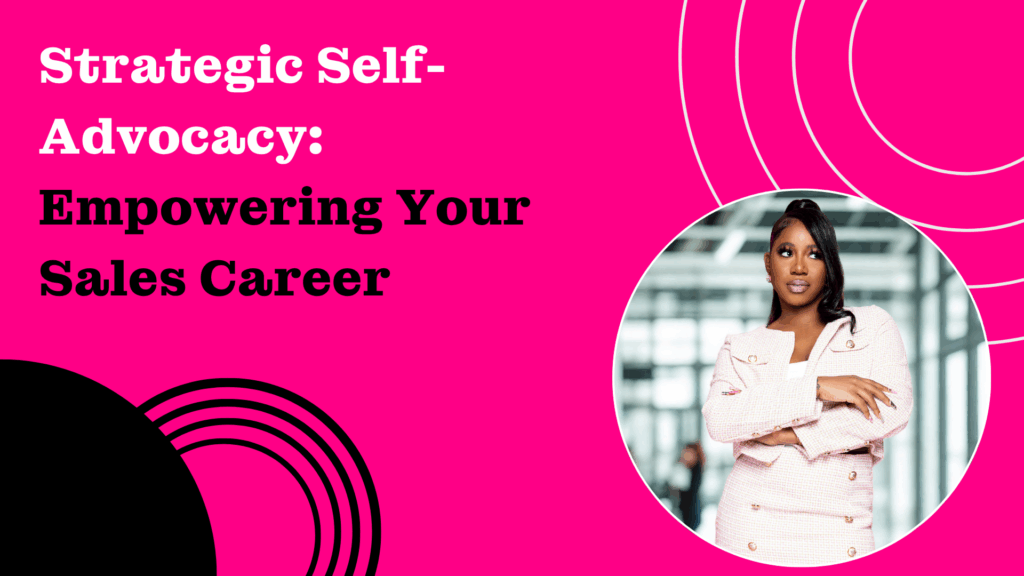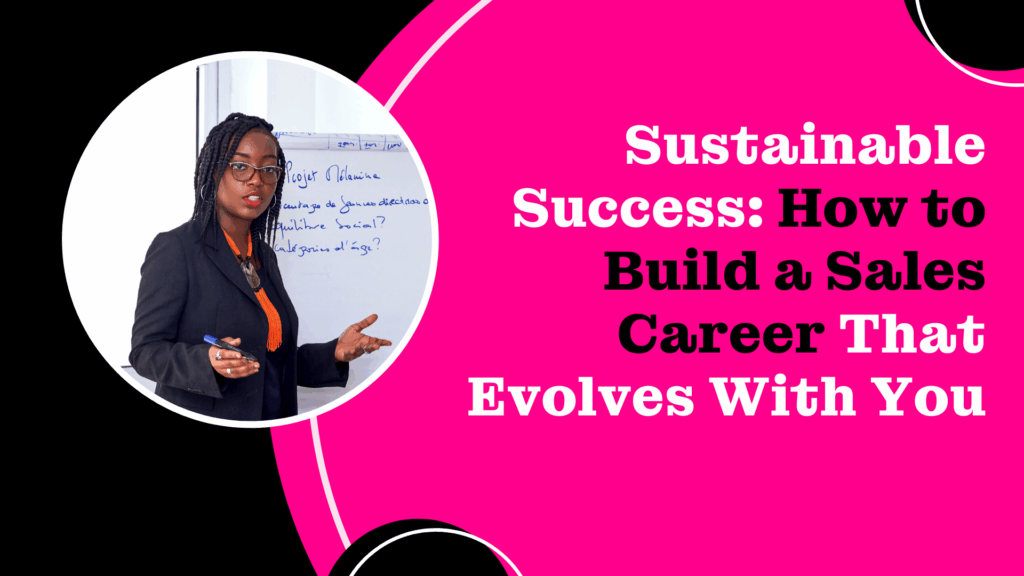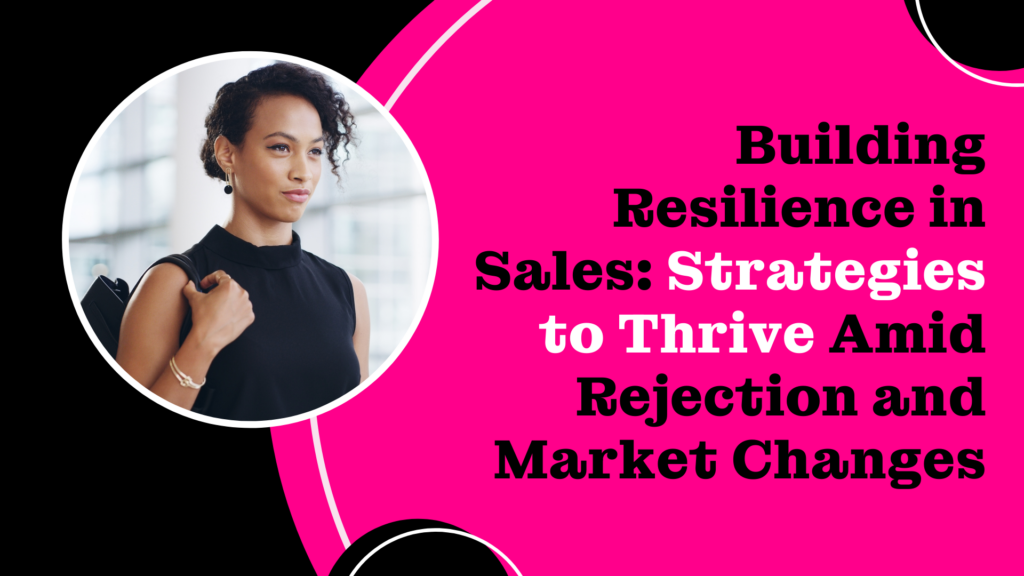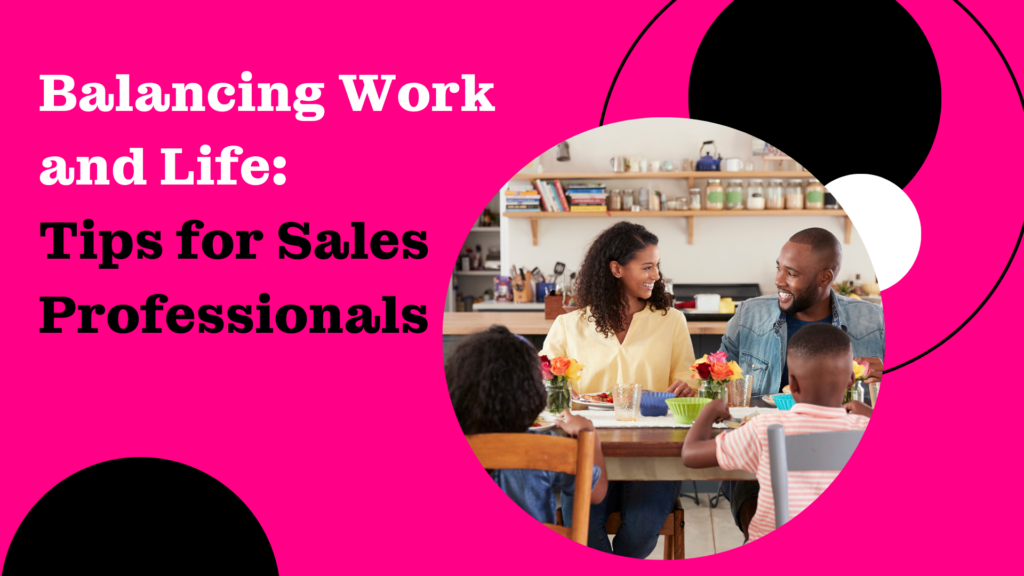From Top Seller to CEO: Lessons from Successful Entrepreneurs

Sales is more than a profession. It is a launchpad for leadership. For women of color navigating both the challenges of underrepresentation and the high demands of performance, sales builds resilience, sharpens strategy, and develops the kind of confidence required to lead at the top. Many of today’s most impactful entrepreneurs and CEOs, especially women of color, began their careers in sales. The same grit, empathy, and hustle that drive quota-crushers also power visionaries, founders, and executives who chart their own path to the top. Sales Is the Ultimate Leadership Training Sales builds the foundation for what it takes to lead. It teaches you to build trust, adapt quickly, and deliver results under pressure. These aren’t soft skills. They are the cornerstones of executive success. Here are some success stories from sistas who moved from sales to C-suite: Melissa Butler started her career on Wall Street before launching The Lip Bar, a vegan beauty brand born out of frustration with traditional beauty standards. Her time in finance taught her to pitch with conviction and reject no as a final answer. She used those same skills to grow her business from kitchen experiments to national retail shelves. Morgan DeBaun, founder and CEO of Blavity Inc., credits her early sales and media experience with shaping the way she built a platform that speaks directly to Black millennial audiences. The negotiation skills, market positioning, and audience-first thinking she developed in sales became the bedrock of her company’s growth. Janice Bryant Howroyd, founder and CEO of ActOne Group, started her path not in retail or tech, but building relationships one pitch at a time. She grew a minority-woman-owned staffing agency into a billion-dollar enterprise. Her early sales days taught her the importance of listening, problem-solving, and authentic connection, skills she credits for long-term, large-scale success. Lisa Price, founder of Carol’s Daughter, began selling handmade beauty products at local flea markets and out of her Brooklyn kitchen. Her ability to tell a compelling story, understand customer needs, and build community helped turn her side hustle into a multimillion-dollar brand. Her journey from grassroots selling to retail shelves nationwide shows the transformational power of sales done with heart and vision. These leaders prove that sales is not just a step on the path. It is a powerful foundation for creating something bigger, bolder, and deeply transformational. Mindset Shifts That Fuel the Move to Leadership Making the transition from high-performing sales professional to founder or executive requires more than tactical skill. It calls for a shift in mindset, especially for women of color often taught to prove value before owning it: From performer to visionary. You are no longer just hitting goals, you are setting them for others. From transactions to transformation. Leadership means thinking beyond numbers to impact, culture, and legacy. From proving your worth to owning your power. You do not need permission to lead, you need clarity, courage, and consistency. Owning your power also means mastering how you advocate for yourself. That includes presence, negotiation, visibility, and strategic self-advocacy. From Pitching to Founding: Lessons from the Journey If you are considering the journey from sales to CEO, remember that every stage, every deal closed, every challenge overcome, is a milestone preparing you for what comes next. Lean into what you’ve mastered. Every pitch, follow-up, and negotiation has prepared you to lead. Start before you feel ready. Action creates clarity. Build a circle that stretches you. Find mentors, advisors, and peers who champion your growth. Your reputation is shaped by how you show up every day, in conversations, in client interactions, in how you lead. Building visibility with intention can turn daily actions into long-term influence, especially when supported by a clear, personal brand. That’s why cultivating a strong presence and voice in sales is such a powerful step toward leadership. You Are Already Building the Blueprint Your experience in sales is not a stepping stone. It is a springboard. The mindset, skills, and results you’ve created prove that you are capable of much more than the next closed deal. Leadership is not waiting for you at the end of a perfect plan. It is built through every courageous conversation, every bold ask, and every moment you bet on yourself. Let’s Build What’s Next Together At Sistas in Sales, we support the sales-to-leadership pipeline. Whether you’re moving into management, launching a business, or becoming the face of your own brand, we offer the resources, network, and sisterhood to help you rise. Join the Sistas in Sales community to access mentorship, leadership development, and real conversations about what it takes to grow with purpose. And don’t miss the Sistas in Sales Summit 2025, the premier space where women of color in sales come together to expand their impact, celebrate their wins, and shape their futures on their own terms. Your story doesn’t end at top seller. It begins again, with you in the lead.
Strategic Self-Advocacy: Empowering Your Sales Career

In sales, numbers speak, but so should you. For women of color in the industry, self-advocacy is not a luxury. It is a leadership skill. It is how you make your value visible, ensure your contributions are recognized, and claim the opportunities you have earned. Too often, we are told to let our work speak for itself. But in environments where visibility is uneven and biases exist, staying silent can mean staying overlooked. Self-advocacy is not about ego. It is about equity. It is the difference between waiting to be chosen and choosing yourself. Between hoping someone notices your impact and making sure they do. The good news? You can self-advocate in a way that feels strategic, authentic, and aligned with your values. Shift Your Mindset: Self-Advocacy Is a Skill, Not a Personality Trait You do not have to be the loudest person in the room to be effective at self-advocacy. You do have to be clear on your worth and intentional about how you communicate it. Start by reframing the idea that advocating for yourself is bragging. It is not. It is data. It is storytelling. It is leadership. Ask yourself: What impact have I had this quarter? What relationships have I built or strengthened? Where have I gone above expectations? Document these wins regularly. Your success deserves receipts, and receipts build confidence. Be Clear on Your Value Proposition Just like your product pitch, your career pitch should clearly articulate your unique value. What do you bring to the table that drives results? What problems do you solve? What is your unique strength? Build a “self-advocacy script” rooted in outcomes: “Last quarter, I exceeded my quota by 28 percent by expanding into a new client segment.” “I created a new onboarding deck that helped ramp up new reps two weeks faster.” “My ability to build trust with cross-functional teams helped move a stalled deal to close.” These are not just statements, they are proof points. They show how you lead, contribute, and grow impact. Speak Up in the Right Rooms It is not enough to be excellent. You need to be visible. Start looking at every meeting, one-on-one, and performance review as an opportunity to reinforce your impact. Share updates with clarity. Offer insights when appropriate. Ask for feedback and share your own goals. Promote yourself constructively. Do not wait until review season to talk about your wins. Build the habit of regularly sharing progress with your manager or team. Use emails, one-pagers, or quick check-ins to show alignment and impact. And do not be afraid to ask for what you want. That promotion, that raise, that leadership opportunity is not out of reach, but it may require you to claim it first. Build Internal Advocates, Not Just Mentors Mentorship is powerful. Sponsorship is game-changing. A mentor offers advice. A sponsor uses their influence to open doors for you. To advocate for yourself strategically, build relationships with people who understand your work and are in rooms you are not yet in. Keep them looped in on your progress. Ask for guidance and visibility. Offer support in return. Your network inside your company is part of your brand. Curate it with care. Use Your Voice to Lead, Not Just to Defend Self-advocacy is not just about protecting your performance. It is about leading from where you are. That means speaking up when you see gaps in strategy. Sharing ideas to improve systems. Advocating for other women of color. Asking tough questions when inclusion is missing. When you lead with confidence and clarity, you build credibility and you make space for others to rise too. Your Impact Deserves to Be Seen You have already done the work. You have put in the hours. You have delivered the results. Now it is time to make sure the right people know what you bring to the table. Self-advocacy is how you take control of your career path. It is how you turn quiet excellence into recognized leadership. And you do not have to do it alone. At Sistas in Sales, we create spaces for women of color to speak boldly about their value, build strategic influence, and grow their careers with power and purpose. Whether you are aiming for a promotion, managing up, or preparing to negotiate your worth, this community is here to sharpen your voice and support your rise. Join us at the Sistas in Sales Summit 2025 to deepen your leadership, expand your network, and master the art of strategic self-advocacy. You have earned your seat at the table. Now let’s make it count.
Sustainable Success: How to Build a Sales Career That Evolves With You

Sales is often framed as a sprint. Hit the numbers. Push through the pressure. Grind hard, rest later. But here’s the truth: That model burns people out, especially women of color who are navigating both professional and cultural pressures in high-performance environments. Your sales career deserves more than a burnout cycle. It deserves strategy, sustainability, and space to evolve as you do. This is not just a job. This is a career. And a sustainable career means doing work that energizes you, builds your skills over time, and aligns with the life you’re creating—not just the goals you’re chasing. Be Productive, Not Overextended Productivity isn’t about packing your calendar or always being available. It’s about staying focused on what actually moves the needle and letting go of the noise. You don’t need to earn your value through exhaustion. The constant hustle, the back-to-back calls, the late-night follow-ups? Those are signs of misalignment, not ambition. You are allowed to pause, recalibrate, and redefine what a productive day looks like for you. Start here: Time-block your most focused hours for strategic work, not just calls or meetings Schedule your priorities, not just your tasks Let AI or automation help you streamline follow-ups and reporting Protect time for thinking, planning, and rest—because clarity requires space Productivity should support your well-being, not compete with it. When you manage your energy with intention, you do more of what matters and less of what drains you. Think Long-Term: Redefining Sales Success You didn’t come this far to burn out halfway through. Sales is intense, but it can also be a long, rewarding journey if you build it on your terms. Sustainable success means designing a career that grows with you, not one that demands you shrink to fit it. That might mean stepping into leadership, shifting into a new industry, taking a sabbatical, or pivoting into a role that aligns better with your values. Sustainability looks like: Taking real time off and honoring it without guilt Having honest conversations about your bandwidth Seeking sponsors who advocate for your growth and protect your potential Allowing your goals to evolve as your life evolves Your ambition does not expire when your priorities shift. It sharpens. It becomes more intentional. You are allowed to change your mind. You are allowed to grow. You are allowed to define success in ways that reflect who you are now—not just who you were when you started. Your Career Should Honor Your Life, Not Override It Sales should not come at the cost of your peace, your health, or your identity. The job is important, but so is your joy. So is your family. So is your rest. A career worth having is one that creates room for your wholeness—not just your performance. You are not here to prove yourself endlessly. You are here to build something that lasts. That might mean logging off when you said you would. Saying no to work that doesn’t align with your values. Making time for the things that recharge you. Or redefining your goals to reflect what success actually feels like, not just what it looks like from the outside. This is not a sprint. It’s a rhythm. One that adjusts to you, not the other way around. Ready to Grow With Us? You’re building a career that reflects your vision, not just your role. And that takes community, clarity, and care. At Sistas in Sales, we believe you should not have to choose between performance and peace. We offer the space, resources, and sisterhood to help you grow your sales career in a way that is strategic, sustainable, and aligned with who you are. Join us at the Sistas in Sales Summit 2025. This is where goals meet grounding. Where growth feels personal and collective. Where women of color in sales come together to connect, learn, and lead with power and purpose. Build a career that honors all of you. We’ll meet you there.
Building Resilience in Sales: Strategies to Thrive Amid Rejection and Market Changes

Sales isn’t for the faint of heart—and we don’t say that to scare anyone. We say it because it’s true. Targets are rising. Markets are shifting. Buyers are cautious. And rejection? It’s part of the job. But for women of color in sales, there’s another layer: navigating professional pressure while also managing the silent weight of being underestimated, overlooked, or “the only” in the room. That’s why resilience isn’t just a mindset—it’s a muscle. One that can be trained, sharpened, and strengthened over time. Whether you’re facing another “no,” dealing with a slow quarter, or adapting to a shifting industry, these strategies are designed to help you not just bounce back—but rise, evolve, and thrive. Reframe Rejection as Redirection Let’s start with the hardest truth: rejection is inevitable. But here’s the reframe—it’s also information. It’s data. It’s direction. Instead of internalizing a lost deal as a failure, start asking different questions. What did I learn? What patterns do I notice? What part of the conversation could I fine-tune next time? You’re not just hearing “no.” You’re gathering insight. And the faster you reframe, the faster you grow. Try this: Keep a “resilience tracker” where you log rejections and write down one takeaway for each. Over time, you’ll see growth—not just grit. Adaptability Is Your Advantage Watch for the signs—your adaptability is often triggered by what no longer works the way it used to. That doesn’t mean you’re off your game—it means the game has changed. The most resilient sales pros know how to spot the signals early and shift before the impact hits their numbers. Your usual scripts aren’t converting. The talk tracks that used to land with ease now feel flat. Prospects are less responsive. You’re not getting callbacks, or your close rate is slipping. That’s a sign your language, timing, or offer might need to evolve with your buyer’s mindset. What’s changed in their world? What external pressures (economic, competitive, tech-related) might be influencing their hesitations? Buyer objections have shifted. Where buyers used to say, “We don’t have budget,” they’re now saying, “We’re pausing all new vendor conversations.” Or, “We need a clear ROI in 30 days.” Objections reveal priorities. If those priorities are changing, your pitch—and your prep—needs to change too. Start collecting and analyzing objections in real time. What are buyers really worried about right now? Build new language that speaks directly to those pain points. Your product is being positioned differently. Maybe your company is leaning into a new use case. Maybe your product roadmap shifted. Maybe your marketing team is highlighting different benefits. If the messaging around your product is evolving, your sales strategy has to evolve too. Stay close to product and marketing teams. Ask for the “why” behind the shift, and adapt your conversations to reflect the new narrative. Once you’ve spotted the shift, don’t freeze—adapt. Too many sellers try to force outdated messaging because it worked once. But resilience isn’t about holding on—it’s about letting go of what no longer works and being willing to try something new. Run small experiments. Test a new email subject line. Lead with a different insight. Open with a bolder question on your next call. These small shifts help you stay agile without waiting for permission or a playbook update. Pivot early. Test often. Trust your instincts. You’ve got experience, insight, and data on your side. Use them to stay one step ahead—not just of the market, but of the version of you who’s still playing by yesterday’s rules. But even the sharpest strategy needs support. Resilience is built faster—and held stronger—when you’re surrounded by people who truly understand the journey. Ground Yourself in Community You weren’t meant to do this alone. When the pressure’s on, community isn’t just support—it’s strategy. It’s the space where you can exhale, reflect, and be reminded that your challenges are valid—and solvable. That’s why being part of a network like Sistas in Sales matters. It’s not just about access—it’s about affirmation. It’s where you can process a hard week, role-play a new talk track, or hear from someone who’s been there and bounced back better. Want to keep growing in a space that gets it? SIS membership offers events, mentorship, resources, and real-time connection to a community that’s invested in your success. Commit to Continuous Learning Resilience isn’t just about getting through the tough moments—it’s about sharpening your edge so you’re ready for what’s next. It’s the ability to stay curious when things get uncertain, to keep evolving even when results feel stalled, and to invest in yourself consistently—not just when it’s convenient. Make learning part of your process—not as a side project, but as a built-in part of your growth strategy. You don’t need hours or expensive certifications. You need consistency and intention. Listen to a podcast during your commute or while making dinner. Sign up for a micro-course on AI to learn how emerging tech can support your pipeline. Read 10 pages of a sales book before bed to shift your mindset before tomorrow’s call block. Learning builds confidence. Confidence builds momentum. And momentum builds results. Here’s a starting lineup to fuel your development: Podcast: Women in Sales by Barb Giamanco – Real, unfiltered conversations about navigating leadership, strategy, and bias in sales as a woman. Book: Emotional Agility by Susan David – A guide to managing your inner world with clarity and resilience, especially when under pressure. Tool: ChatGPT – Use it to draft emails, practice objection handling, role-play discovery calls, or get quick summaries on unfamiliar industries. The more you invest in sharpening your skills and mindset, the more prepared you’ll be to thrive through uncertainty—not just survive it. Daily Practices That Strengthen Your Resilience Muscle Resilience isn’t only built in the big moments—it’s cultivated in the quiet, intentional choices you make every day. The more consistent your habits, the more stable your mindset. And in sales, that inner stability becomes your superpower. Here’s how to build it: Check in with yourself daily: Before
Cross-Functional Collaboration: Bridging Sales, Marketing, and Product Development

Cross-functional collaboration isn’t a buzzword—it’s a business imperative. In today’s competitive landscape, the companies leading their industries aren’t just selling better; they’re aligning better. Sales, marketing, and product development must operate as a unified front, not disconnected departments with competing priorities. For professional women of color in sales, understanding and driving this alignment is more than a value-add—it’s a leadership move. When these three functions work in sync, the impact is measurable: shorter sales cycles, more relevant campaigns, and solutions that meet real customer needs. But true collaboration requires more than calendar invites or shared docs—it demands a shift in how teams communicate, strategize, and center the customer. Start with Shared Goals Sales is focused on conversion and revenue, marketing on brand visibility and demand generation, and product on innovation and usability. These priorities may differ in scope, but they’re united in purpose: delivering value to the customer. That alignment only happens when teams co-create goals around the full customer journey, not just individual KPIs. Quarterly planning sessions, mutual accountability metrics, and shared definitions of success are essential in creating alignment that lasts. Speak Each Team’s Language The most effective sales professionals know how to communicate beyond the pitch. That means understanding how marketers think about funnel strategy or how product teams prioritize sprints. Translating sales data into actionable insights—like patterns in lost deals, product feedback from clients, or objections heard in demos—builds credibility and drives influence. When you can bridge that language gap, you stop being a voice from another department and start becoming a trusted strategic partner. Champion the Voice of the Customer No one has a clearer pulse on the customer than sales. You hear the concerns, the aspirations, the blockers—and you hear them in real time. That insight is a competitive advantage, and when it’s shared across teams, it can inform smarter product decisions and more compelling marketing. But it’s not just about relaying what customers say. It’s about representing perspectives that are often overlooked. Women of color in sales bring different lived experiences, informing an emotional intelligence and observations that can illuminate nuances others might miss. That perspective matters—not just in who we serve, but in how we build. Make Collaboration a Habit, Not a Handoff Collaboration isn’t a project milestone—it’s a rhythm. Building consistent, repeatable opportunities for collaboration turns alignment into a cultural standard. That could look like recurring cross-functional standups, shared dashboards for tracking customer trends, or co-led campaigns. But structure alone won’t sustain collaboration—relationships will. Invest in trust. Understand your counterparts’ pressures. Lead with partnership, not requests. Lead with Inclusion Inclusion is not an add-on to collaboration; it’s the foundation. When diverse perspectives are part of the planning, strategy, and decision-making process, the outcomes are richer, more relevant, and more sustainable. As women of color in sales, our leadership in cross-functional work is not only about driving results—it’s about reimagining what leadership looks like. By showing up with clarity, empathy, and strategic insight, we set new standards for collaboration and collective success. The future of sales isn’t siloed. It’s interconnected, intentional, and inclusive. And it will be shaped by those bold enough to lead beyond their lane. At Sistas in Sales, we’re building a community of women who are not only closing deals but driving cross-functional strategy, amplifying the voice of the customer, and showing up as powerful connectors across departments. If this sounds like you—or who you’re ready to become—membership gives you the tools, network, and access to take your impact to the next level. And there’s no better place to step into that power than the Sistas in Sales Summit this September. Join hundreds of high-performing women of color in sales, marketing, and product for three days of leadership development, industry insights, and the kind of real-talk collaboration that drives transformation. If you’re ready to lead across teams, shape the future of work, and do it all in community—you belong here. Become a SIS member. Join us at Summit. Build what’s next, together.
Using Data and Analytics to Drive Sales Success

Data has been hailed as the backbone of modern sales strategies for years. Yet, the sheer volume of data available can often feel overwhelming, leaving many sales professionals unsure of how to make it work for them. While data has the power to revolutionize sales, its real value comes when salespeople know how to use it effectively: tracking the right metrics, understanding their implications, and steering clear of vanity metrics that don’t contribute to meaningful outcomes. Let’s explore how you can transform data into a tool for sales success. Focus on the Metrics That Matter The first step in harnessing data’s power is understanding which metrics truly matter. Not all numbers are created equal, and chasing the wrong ones can lead to wasted effort. Key Metrics to Track: Metrics like revenue growth, conversion rates, pipeline velocity, and customer lifetime value directly impact your bottom line and help identify where to focus efforts. Diagnostic vs. Vanity Metrics: Diagnostic metrics, such as win/loss ratios and lead response times, reveal areas for improvement and guide your strategy. On the other hand, vanity metrics, like the total number of emails sent, might look impressive but rarely provide actionable insights. Tailor Metrics to Your Goals: What works for one team may not work for another. Align metrics with your sales goals and your customer’s journey to keep your focus sharp. Making Data Work for You Once you know which metrics to prioritize, the next step is turning that information into action. Prioritize High-Impact Data: Use CRM systems to filter and analyze data that drives results. For instance, prioritize leads with high engagement scores or repeat purchase history. Translate Insights Into Strategy: Data is only as good as the actions it informs. If your analysis shows low conversion rates at a specific stage of the funnel, focus your efforts there—whether that means refining your pitch or adjusting your follow-up cadence. Simplify Interpretation: Dashboards can help visualize key metrics, making it easier to focus on actionable insights without getting bogged down in numbers. Tools like Salesforce dashboards or Tableau simplify this process. Tools to Streamline Your Analytics The right tools can make a world of difference when managing data. CRMs like Salesforce or HubSpot are indispensable for tracking customer interactions, while analytics tools like Power BI, Tableau, and Zoho Analytics can help you interpret trends and results. Automation features in these tools can also reduce the manual labor of data entry, freeing you to focus on selling. Avoiding the Pitfalls of Too Much Data While data is invaluable, it can also be a double-edged sword if not managed correctly. Data Paralysis: Too much data can lead to inaction. Focus on 3–5 key metrics aligned with your goals to maintain clarity. Inconsistent Data: Dirty data—duplicate entries or incorrect details—can skew your analysis. Regular maintenance is crucial. Chasing Vanity Metrics: Avoid metrics that don’t drive decisions or align with your goals. Keep your focus on the ones that truly impact performance. Data-Driven Support with SIS Navigating the world of data can feel daunting, but you don’t have to do it alone. Through Sistas in Sales (SIS), you gain access to resources that simplify the process: Workshops on the metrics that matter most in sales. Insights from seasoned sales professionals who’ve mastered data usage. A supportive community eager to share tools, tips, and best practices for leveraging analytics. Empowering Your Sales Career Through Data Data can be your greatest ally in sales—if you let it. By focusing on meaningful metrics, leveraging the right tools, and turning insights into action, you can move from feeling overwhelmed to empowered. The key is to start small: pick one or two metrics to focus on, and build your confidence from there. Ready to master data-driven sales strategies? Join Sistas in Sales to gain access to exclusive resources, learn from industry leaders, and take your sales game to the next level. Together, we can turn data into your most powerful sales tool.
Effective Sales Pitch Techniques

A compelling sales pitch can be the key to closing deals, building trust, and setting yourself apart in a competitive sales environment. It’s more than just presenting a product or service—it’s about connecting with your audience, solving their problems, and leaving a lasting impression. To create a pitch that sticks, you need strategy, storytelling, and skillful delivery. Here’s how to craft and deliver an effective sales pitch that drives results. Understand Your Audience Inside and Out Before you pitch, you need to understand who you’re talking to and what matters most to them. Tailoring your approach to the audience’s needs increases the likelihood of a successful outcome. Do Your Research: Dig into your prospect’s company, their industry, and their pain points. What challenges do they face? How can your solution help them succeed? Ask Questions: If you have the opportunity, gather insights during pre-pitch conversations to identify their goals and concerns. Make It Personal: Avoid generic messaging. Address your audience’s specific situation and show that you understand their world. For instance, McKinsey highlights the importance of creating customer-centric sales strategies that focus on addressing real needs rather than pushing products blindly. Lead with Value, Not Features The best pitches don’t dwell on technical details—they focus on value. Prospects care less about what your product does and more about how it will help them succeed. Focus on Outcomes: Start with the end result. How will your product or service make their life easier, improve revenue, or solve a pressing problem? Share Tangible Results: Use numbers or specific benefits to illustrate impact. For example, “Our platform increases pipeline visibility, helping teams close 20% more deals in half the time.” Connect Emotionally: Value isn’t always about money. Talk about saving time, reducing stress, or gaining a competitive edge. The key is to make prospects see how your solution will help them win. Research by HubSpot indicates that tying value to a buyer’s personal goals and company objectives creates stronger engagement. Tell a Story That Resonates People remember stories more than statistics. Stories make your pitch relatable, engaging, and memorable. They help you move beyond selling and into connecting. Problem → Solution → Success: Frame your pitch around a clear story structure. Share a challenge faced by a similar client, how you helped them, and the success they achieved. Include Real People: Use customer testimonials, anecdotes, or case studies to make your story authentic. Make It Vivid: Describe the situation with detail, but keep it concise. Use emotional or visual language to help prospects see the story unfold. A good story doesn’t just share results—it helps your audience imagine themselves achieving similar success. Perfect Your Delivery The most thoughtful pitch will fall flat if your delivery isn’t strong. Confidence, clarity, and charisma can take a good pitch to the next level. Practice, Practice, Practice: Rehearse until you’re comfortable. Anticipate potential questions and prepare responses to maintain control of the conversation. Be Clear and Concise: Respect your prospect’s time. Keep your pitch direct and focus on what matters most to them. Engage Your Audience: Ask questions, make eye contact (if virtual, turn on your camera!), and watch for body language cues to adapt in real time. End with a Strong CTA: A clear next step keeps the conversation moving. Whether it’s booking a follow-up meeting, sharing a proposal, or trying out a demo—make the ask. Adapt to Virtual Sales Environments With virtual meetings now the norm, sales professionals must adapt their techniques for digital platforms. Turn Your Camera On: Your prospects want to see a real person, not just hear a voice. Seeing your energy and body language fosters trust and connection. Optimize Your Setup: Use good lighting, a clean background, and a strong internet connection to maintain professionalism. Engage Virtually: Use tools like polls, visuals, or live demos to hold attention and keep prospects actively involved. SIS Sponsor Gartner has research illustrating that virtual selling is here to stay, with 80% of B2B interactions now occurring online. The ability to master virtual delivery will set top sellers apart. Follow Up with Impact Your pitch doesn’t end when the meeting does. A strong follow-up can reinforce your message, address concerns, and keep the momentum going. Summarize the Conversation: Send a recap email highlighting key takeaways, next steps, and your value proposition. Personalize Your Follow-Up: Reference specific points from the conversation to show you were listening and tailor the message to their goals. Provide Additional Value: Share case studies, articles, or product information that further supports how you can solve their problems. Effective follow-ups show that you’re proactive and invested in their success, increasing the likelihood of a positive outcome. Master Your Pitch with SIS An effective sales pitch combines preparation, value, storytelling, and strong delivery. Whether you’re pitching virtually or in person, these techniques will help you connect with your audience and close more deals. Looking to sharpen your sales pitch further? Join the Sistas In Sales (SIS) community for exclusive resources, coaching, and mentorship opportunities that help you elevate your sales game and achieve your goals.
Balancing Work and Life: Tips for Sales Professionals

Working in sales often feels like being on an endless treadmill—calls, emails, follow-ups, client meetings, and the constant pressure of hitting your numbers. It’s a career that rewards hustle, but without balance, that hustle can quickly turn into exhaustion. Finding work-life balance is not a luxury—it’s essential for long-term success, mental well-being, and career satisfaction. Set Clear Boundaries Between Work and Life The pressure to always be “on” can blur the line between your professional and personal life. Without boundaries, it’s easy to burn out or feel perpetually tethered to work. Start by setting defined work hours and sticking to them. If you’re done at 6 p.m., step away and let your clients and colleagues know you’ll pick things up the next day. Create physical and digital boundaries too—turn on “do not disturb” settings on your devices, close your email when you’re off the clock, and make sure your workspace is separate from your living area whenever possible. By consistently honoring these boundaries, you’ll show others (and yourself) that balance matters. Master Time Management to Work Smarter Sales professionals know that time is money, but managing it effectively is easier said than done. Use time-blocking strategies to organize your day into focused work segments—prospecting, client calls, follow-ups, and admin tasks—while building in time for breaks. It’s equally important to prioritize the tasks that drive the most results. Apply the 80/20 rule: 20% of your tasks will generate 80% of your impact. Focus on high-value activities that move you closer to your goals and delegate or automate tasks that don’t require your attention. Productivity tools like CRMs, calendars, and task management software can help streamline your efforts. Prioritize Self-Care to Boost Energy and Focus It’s a common misconception that pushing through fatigue shows dedication. In reality, neglecting your well-being hurts both your personal health and professional performance. Small acts of self-care throughout your day can make a huge difference. Take real breaks: step away from your screen, stretch, or take a walk. Prioritize getting enough sleep, staying hydrated, and incorporating exercise—even if it’s just a quick 10-minute routine. When you feel physically and mentally recharged, you show up sharper, more focused, and ready to win. Find Strength in Community Navigating the demands of a sales career is far easier when you’re surrounded by people who understand what you’re going through. Build connections with peers and mentors who can share advice, provide support, and offer fresh perspectives. Whether it’s brainstorming strategies, working through challenges, or celebrating wins, community makes a difference. Joining organizations like Sistas in Sales can provide invaluable access to resources, events, and a network of women of color who empower one another. In spaces like these, mentorship thrives, knowledge is shared, and professional relationships turn into lifelong bonds. Redefine Success Beyond the Numbers Success in sales often comes down to hitting targets and closing deals, but true success is about sustainability, growth, and personal well-being. Shift your mindset to celebrate progress instead of chasing perfection. Small wins—like building stronger client relationships, achieving personal goals, or learning new skills—are just as important as the numbers you hit. When you focus on steady, sustainable growth, you’ll reduce pressure, create healthier habits, and find more fulfillment in your work. Achieving Balance Makes You Better at What You Do Balancing work and life doesn’t have to mean working less—it means working more intentionally. When you prioritize your time, honor boundaries, and invest in your well-being, you’ll perform at your best. If you’re looking for additional tools to thrive in your career while maintaining balance, consider joining Sistas in Sales. As part of our community, you’ll gain access to mentorship opportunities, professional development events, and a network of women who support your growth. Together, we’re redefining what success looks like—one career at a time. Sales is a marathon, not a sprint. By striving for balance, you’ll ensure you have the energy, focus, and resilience to reach the finish line—and beyond.
The Importance of Emotional Intelligence in Sales

Emotional intelligence (EQ) is a critical, often underestimated skill that separates top-performing sales professionals from the rest. It’s about more than just understanding products or delivering a polished pitch—success in sales requires the ability to connect, empathize, and respond to people on a human level. With EQ, salespeople can navigate complex client relationships, overcome challenges, and build trust that lasts. Let’s dive into why emotional intelligence matters in sales, the key components of EQ, and how you can develop this skill to elevate your career. Why Emotional Intelligence Matters in Sales Sales is, at its core, about relationships. Emotional intelligence gives sales professionals the tools to nurture these relationships, foster trust, and deliver solutions that meet a client’s emotional and business needs. Building Strong Relationships: Clients don’t just buy products—they buy into relationships. EQ helps you connect with clients more authentically, earning their trust and loyalty. Understanding Client Needs: Emotional cues can reveal a client’s true concerns or priorities. By listening closely and responding with empathy, you’ll uncover opportunities to deliver real value. Handling Rejection and Objections: No one wins every deal, but high EQ allows salespeople to manage rejection gracefully, bounce back with resilience, and turn setbacks into learning moments. Team Success: Emotional intelligence fosters stronger collaboration within sales teams. Better communication and mutual understanding help everyone succeed. The Key Components of Emotional Intelligence in Sales Emotional intelligence is made up of five core components, each playing a vital role in sales interactions. Self-Awareness Recognizing your own emotional triggers, strengths, and weaknesses is the foundation of EQ. Self-aware sales professionals can adapt their approach, stay calm, and connect with clients more effectively. Self-Regulation When a sales call goes sideways or a client raises objections, EQ enables you to stay composed and professional. Self-regulation means managing your emotional responses—staying calm under pressure and keeping frustration in check. Empathy Empathy is the ability to understand and share the feelings of another person. In sales, it’s about putting yourself in your client’s shoes—asking thoughtful questions, actively listening, and validating their concerns to show you truly care about their success. Social Skills From building rapport to negotiating deals, strong social skills are essential for navigating client relationships. EQ helps you read emotional cues, adapt your tone, and connect in a way that feels natural and genuine. Motivation Sales comes with highs and lows, but emotionally intelligent professionals are driven by intrinsic motivation. They focus on their goals, stay resilient through challenges, and find ways to inspire themselves and others. Emotional Intelligence in Action EQ isn’t just theoretical—it plays out in everyday sales interactions. Here are a few examples: Turning Frustration into Trust: A client comes to you frustrated with a service issue. By validating their concerns, showing empathy, and providing a tailored solution, you not only resolve the issue but earn their trust. Responding to Rejection: After losing a big deal, you stay positive, seek constructive feedback, and identify ways to improve for next time. Building Deeper Connections: During a pitch, you pick up on the client’s hesitations through tone or body language. By asking the right questions, you uncover hidden pain points and provide a solution they hadn’t even considered. These real-world scenarios demonstrate that emotional intelligence isn’t just “nice to have”—it’s a critical tool for success. How to Develop Emotional Intelligence for Sales Success The good news is that emotional intelligence can be developed over time with practice and intention. Practice Active Listening: Instead of planning your response while the client is speaking, focus fully on understanding their words, tone, and body language. This helps you respond thoughtfully and show genuine interest. Increase Self-Awareness: Take time to reflect after meetings or calls. What went well? How did you handle challenges? Identify emotional triggers and areas for improvement. Empathy Training: Work on asking open-ended questions that invite clients to share their concerns. Respond with validation, not defensiveness. Manage Stress and Rejection: Build coping strategies like mindfulness, exercise, or journaling to stay calm under pressure. Seek Feedback: Ask colleagues, mentors, or even clients how you come across in meetings. Honest feedback can help you grow your EQ. The Long-Term Benefits of EQ in Sales Mastering emotional intelligence isn’t just about improving this quarter’s numbers—it delivers long-term benefits that can transform your sales career. Higher Client Retention: Clients want to work with sales professionals who listen, care, and deliver value. Strong EQ fosters loyalty and trust. Better Close Rates: Understanding and adapting to client emotions gives you an edge in negotiations and helps you close more deals. Stronger Team Collaboration: EQ improves communication and connection within sales teams, leading to better teamwork and results. Personal and Professional Growth: Developing EQ not only elevates your career but also enhances your ability to handle stress, build relationships, and thrive in all areas of life. EQ Is Your Secret to Sales Success Emotional intelligence is the key to thriving in sales—helping you build deeper connections, handle challenges with resilience, and deliver value in every client interaction. At Sistas in Sales, we believe that EQ is a critical part of mastering the sales craft. Join our community to connect with other high-performing women of color in sales, access expert-led resources, and continue growing in your career. Ready to take your EQ—and your career—to the next level? Become a part of the SIS community today!
Tips for Virtual Sales Meetings & Pitches

In the era of remote work, virtual meetings have become the norm rather than the exception. Sales professionals are expected to excel in this environment, not just because it’s convenient but because it’s a vital way to connect with clients, expand networks, and close deals. Whether you’re pitching to a prospective client or meeting with a long-standing partner, how you present yourself virtually can make or break the sale. Here are actionable tips to help you master your next virtual sales meeting or pitch. 1. Preparation Is Your Foundation Preparation is the bedrock of any successful meeting, virtual or otherwise. Always Test Your Tech: Double-check your camera, microphone, and internet connection before the meeting. If you’re sharing your screen, ensure the files or tabs you need are ready to go. Set the Stage: Your background matters—choose a tidy, professional space. Use a virtual background only if it aligns with your brand and doesn’t distract from your message. Plan for Presence: Have your camera on. Let your prospects see your energy and connect with you as a real person. This visual connection builds trust, makes your body language visible, and allows you to read their reactions and adjust in real-time. Know Your Audience: Research your prospect thoroughly. Understand their pain points, goals, and how your solution aligns with their needs. 2. Build Connection from the First Click Building rapport virtually takes intention and effort. Start with Small Talk: Open with something light to ease into the conversation—compliment something about their work, mention a relevant topic, or simply ask how they’re doing. Engage Visually and Verbally: Make eye contact with the camera to simulate in-person connection. Use natural hand gestures and facial expressions to project confidence and warmth. Actively Listen: Nod, affirm, and ask follow-up questions to show you’re engaged and genuinely interested in what they’re saying. 3. Make Your Pitch Memorable Your presentation should capture attention and leave a lasting impression. Keep It Visual: Use slides, videos, or demos sparingly but effectively to complement your points. Visual aids should enhance, not overshadow, your narrative. Tailor Your Message: Speak directly to your prospect’s needs and highlight specific ways your product or service solves their unique challenges. Be Concise: Virtual environments amplify short attention spans. Get to the heart of your value proposition quickly and leave room for questions or discussion. 4. Overcome Objections with Grace Handling objections well demonstrates your expertise and builds trust. Listen First: Let your prospect fully express their concerns before responding. This shows respect and ensures you’re addressing the right issues. Acknowledge Valid Points: Agree where appropriate and provide solutions or reassurances tailored to their concerns. Come Prepared with Proof: Share success stories, case studies, or data to bolster your credibility. 5. Foster Engagement Throughout Keeping your audience involved ensures a productive and memorable meeting. Use Interactive Features: Leverage tools like polls, chat boxes, or collaborative whiteboards to engage your audience actively. Check for Understanding: Pause periodically to ask if they have questions or if they’d like further clarification on a point. Be Mindful of Energy Levels: If the meeting runs long, suggest a quick stretch break or find natural transition points to re-energize the conversation. 6. Follow Up to Seal the Deal The meeting may end, but the work doesn’t stop there. Send a Recap Email: Summarize key takeaways, clarify next steps, and attach any promised resources. Share Supporting Materials: Provide relevant case studies, a link to your product demo, or further reading that reinforces your pitch. Schedule a Next Step: Proactively propose a follow-up meeting or actionable next step while the momentum is fresh. Your Virtual Edge Virtual meetings may not be new, but their importance has never been greater. By presenting yourself professionally, connecting authentically, and communicating effectively, you can stand out in any sales scenario. With consistent practice and the right tools, virtual selling can become one of your strongest assets in today’s competitive landscape. Want more strategies to elevate your sales game? Join the Sistas in Sales community for access to exclusive resources, expert-led events, and a network of women committed to helping you achieve your goals. Unlock your potential with SIS—your next big breakthrough could be one connection away!
